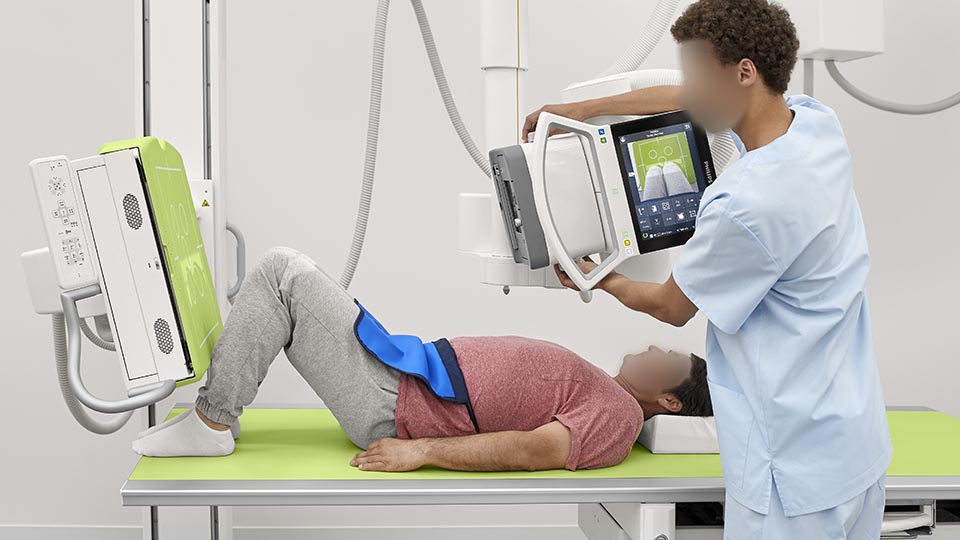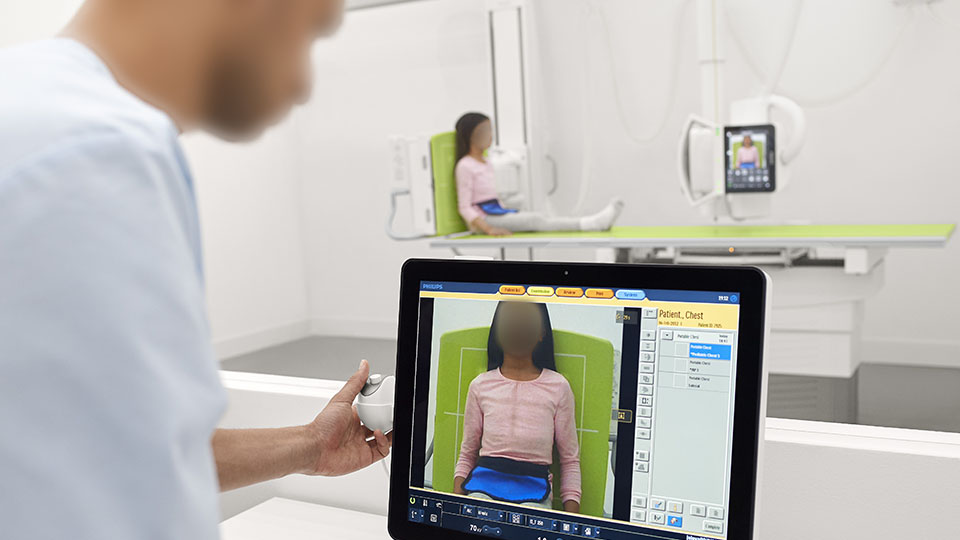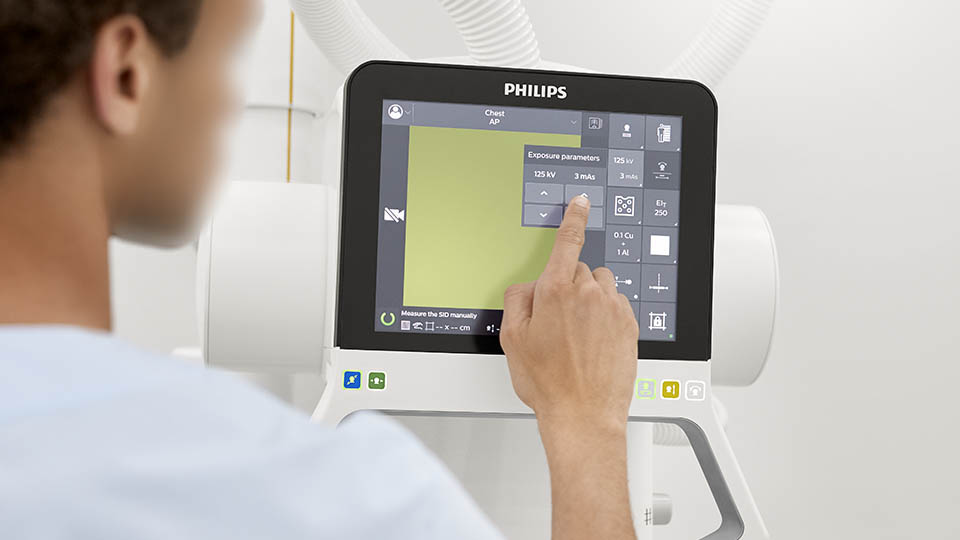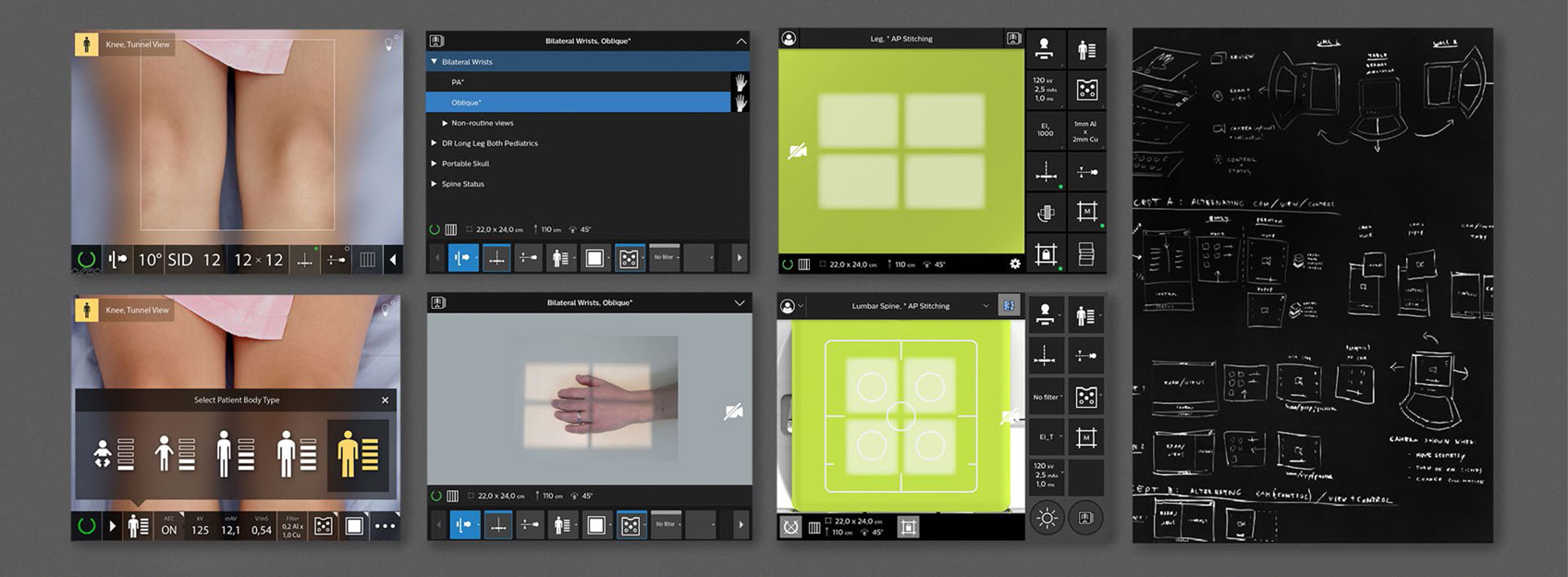Briefing. The task of the tube head redesign was the optimization of the workflow and an increased patient throughput time. All the patient-record data are only available in the control room with the main work-station. Often patients need to have personal contact, as they are nervous during the procedure. The access to the patient data force the technologist to spend much time in the control room.
The existing workflow forced the radiographer to move a lot between the examination and the control room. Our user insights showed that when back in the control room, the radiographer often felt unsure if the patient was still in the correct position. Especially with young children it is sometimes difficult to see if they haven’t moved. Movements can lead to re-takes of X-ray images, which results in increased costs and unnecessary exposure of patients to radiation.




Analysis. We identified Experience drivers – high level ambitions that we want our propositions to succeed in. With the experience drivers and the requirements definition in hand we generate customer insights by interviewing people from a specially set up Customer Advisory Board and by analyzing the workflows of the hospital staff. With these insights in hand, we generated a task / workflow analysis of all the end-user roles involved (e.g. radiographers, technologists, radiologists, referring physicians). When we have a clear image of what their needs are, we capture these typically in User Flows, Personas and issue cards.

Design Concept. We explored in a series of workshops the next generation of the tube head. One key area of our exploration was the seamless interaction between the hardware and the software UI and the consequences on the tube control handle. It should be a continuation of the successful icon of Philips radiography systems combined with sophisticated technology integrated into the device. Different formfactors of the screen were investigated and components like the collimator and tube housing were included in the exercise.

UX Concept. Typically UI’s are overloaded with functionality, just because it is possible and there is space on the screen. Our aim was to reduce the functionality on the tube head to the absolute minimum, so that users are only exposed to the features that they might want to use in that specific moment of their workflow. This required many loops with different UI concepts and review sessions with clinical expert users.

Workflow concept. The entire concept is based on the idea to create maximum flexibility for the user. This X-ray tube head saves time and effort in X-ray departments by enabling technicians to perform most of the workflow inside the exam room, giving radiographers more time to communicate with their patients. A single user interface reduces the chance of error, and its touch UI allows staff to change between planned examinations or review images. A live camera shows a helicopter view of the patient, in both exam and control rooms. A touch sensor in the tube handle releases all brakes, while buttons are color-coded to correspond with the ceiling suspension, making it clear which way the X-ray tube can be moved.
Formative and summative user test. In the final stage we supported the formative and summative user tests, which are required for the FDA approval. We took the key learning from the formative test and used them
for the fine tuning of the final UX Design.

